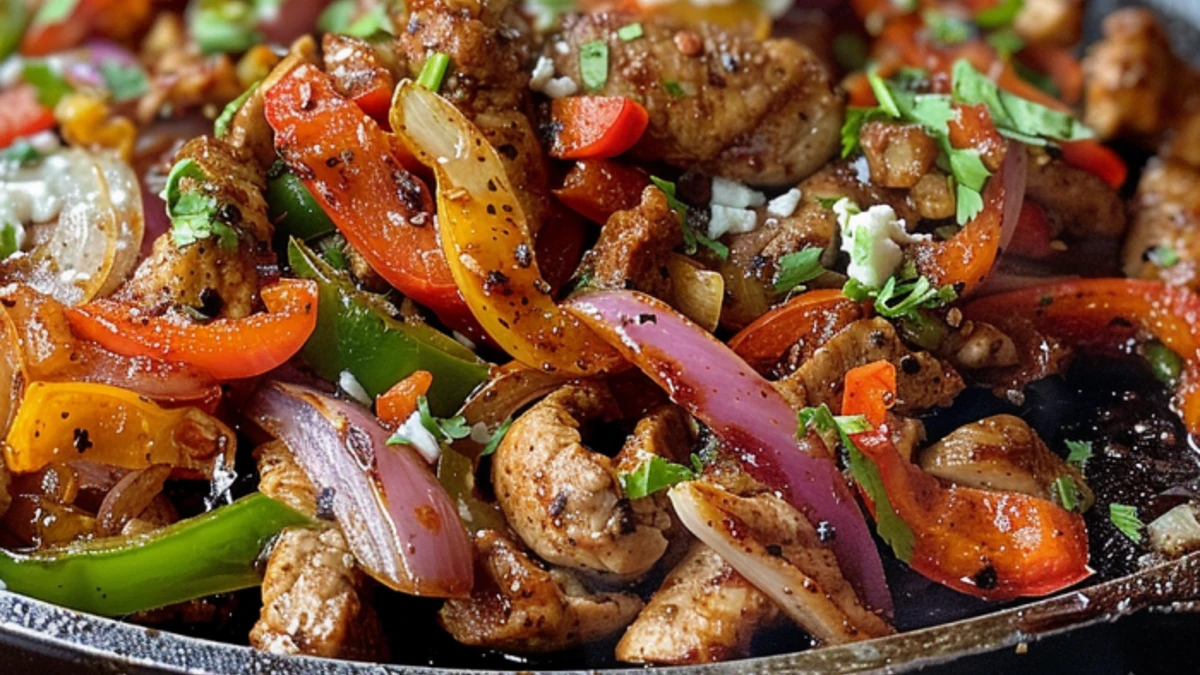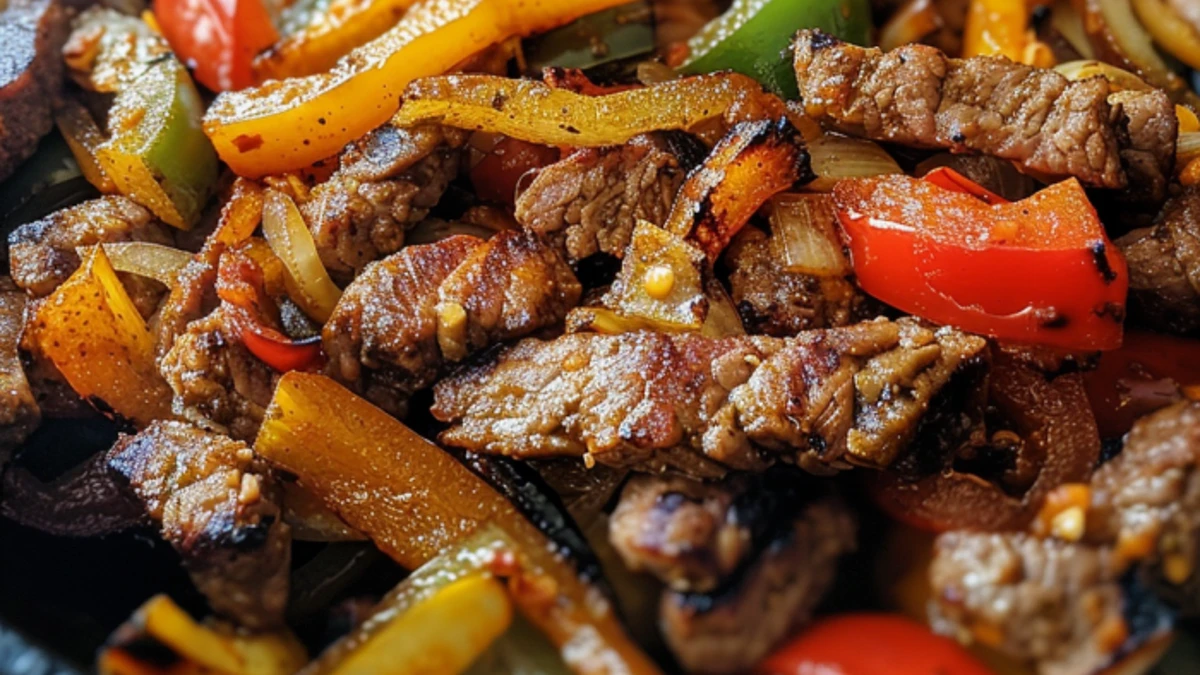What Does Fajita Seasoning Contain?
Fajita seasoning is a blend of spices and herbs that brings the classic Tex-Mex flavor to life. Here are the typical ingredients:
- Chili Powder: This forms the base of the seasoning, providing a mild heat and deep color.
- Cumin: Adds a warm, earthy flavor that is essential in Tex-Mex cuisine.
- Garlic Powder: Brings a robust, savory taste.
- Paprika: Offers a sweet and smoky flavor, often used to add color and depth.
- Onion Powder: Complements the garlic with a subtle sweetness.
- Oregano: Gives a slightly bitter, herbal note that balances the mix.
- Salt: Enhances all the flavors and ensures the seasoning penetrates the meat.
- Black Pepper: Adds a sharp, spicy kick.
These ingredients can be adjusted to taste, making homemade fajita seasoning a versatile addition to any kitchen.
What’s the Difference Between Taco Seasoning and Fajita Mix?
While both taco seasoning and fajita mix are used in Tex-Mex cooking, they have distinct differences in flavor profiles and intended uses.
Taco Seasoning:
- Spicier and Earthier: Typically contains more chili powder and cumin.
- Sweeter Notes: Often includes sugar or other sweeteners.
- Paprika: Less smoky, more for color.
- Broader Use: Designed for ground beef or chicken used in tacos.
Fajita Mix:
- Milder and Brighter: Uses less chili powder, more citrus notes.
- Smoky Flavor: Heavier on smoked paprika.
- Herbal: More oregano and sometimes lime zest.
- Specific Use: Tailored for grilled meats and vegetables in fajitas.
Understanding these differences can help you choose the right seasoning for your dish, ensuring authentic flavors.

What Is in Old El Paso Fajita Seasoning?
Old El Paso is a popular brand known for its Tex-Mex products. Their fajita seasoning mix typically includes:
- Chili Pepper: For a mild heat.
- Cumin: For that essential earthy flavor.
- Garlic Powder: Adds savory depth.
- Onion Powder: Enhances the overall flavor.
- Paprika: Both sweet and smoked variants for color and smokiness.
- Sugar: A touch to balance the spices.
- Salt: To bring out the flavors.
- Natural Flavors and Spices: Proprietary blends to round out the mix.
Old El Paso’s mix is designed to be convenient, offering a balanced flavor profile that works well with chicken, beef, or vegetables.
What Is Traditionally in a Fajita?
Fajitas are a Tex-Mex classic, traditionally made with grilled meats and vegetables. Here’s what typically goes into making a traditional fajita:
- Marinated Meat: Usually beef (skirt steak), but chicken and shrimp are also popular. The meat is marinated in a mixture of lime juice, oil, garlic, and fajita seasoning.
- Bell Peppers: Sliced and grilled until tender. Red, green, and yellow peppers are commonly used.
- Onions: Sliced and grilled alongside the peppers, adding sweetness and flavor.
- Tortillas: Warm, soft flour tortillas are used to wrap the grilled ingredients.
- Condiments: Served with guacamole, sour cream, salsa, and shredded cheese.
The combination of these ingredients creates a delicious, balanced dish that is both satisfying and flavorful.
Creating Your Own Fajita Seasoning
Making your own fajita seasoning at home is easy and allows you to control the flavors. Here’s a simple recipe to get you started:
Ingredients:
- 1 tbsp chili powder
- 1 tsp cumin
- 1 tsp garlic powder
- 1 tsp onion powder
- 1 tsp smoked paprika
- 1 tsp salt
- 1/2 tsp black pepper
- 1/2 tsp oregano
Instructions:
- Mix all the spices together in a bowl.
- Store in an airtight container for up to six months.
- Use about 1-2 tablespoons per pound of meat or vegetables.
Experiment with the proportions to find your perfect blend.

Tips for Cooking Fajitas
Cooking the perfect fajitas involves a few key steps:
- Marinate the Meat: Allow the meat to marinate for at least 30 minutes to absorb the flavors.
- High Heat: Cook the meat and vegetables over high heat to achieve a nice char.
- Quick Cooking: Fajitas are best when the meat is cooked quickly to avoid drying out.
- Resting: Let the meat rest for a few minutes before slicing to retain the juices.
Following these tips will help you create restaurant-quality fajitas at home.
Health Benefits of Fajita Seasoning
Fajita seasoning, made with natural herbs and spices, offers several health benefits:
- Antioxidants: Spices like chili powder and paprika are rich in antioxidants, which help fight inflammation.
- Digestive Health: Cumin and oregano can aid in digestion.
- Low-Calorie: The seasoning itself is low in calories, making it a healthy flavor enhancer.
Incorporating fajita seasoning into your meals can add both flavor and nutritional benefits.
FAQs
What is the best meat for fajitas? Skirt steak is traditionally used for beef fajitas, but chicken breast, shrimp, and even pork can be excellent alternatives.
Can I make fajita seasoning without chili powder? Yes, you can substitute with cayenne pepper for heat or use more paprika for a milder version.
Is fajita seasoning gluten-free? Most homemade fajita seasonings are gluten-free, but always check store-bought versions for any additives or fillers that may contain gluten.
How do I store homemade fajita seasoning? Store it in an airtight container in a cool, dark place to maintain its potency for up to six months.
Can I use fajita seasoning for other dishes? Absolutely! Fajita seasoning can be used to flavor grilled vegetables, soups, and even as a rub for roasted meats.
What vegetables can I add to fajitas? Besides bell peppers and onions, mushrooms, zucchini, and cherry tomatoes can be great additions to your fajitas.
You can also discover the alfredo sauce here
Exploring Variations of Fajita Seasoning
While the classic fajita seasoning is undeniably delicious, there are numerous variations you can experiment with to suit different palates and dietary needs.
Smoky Chipotle Fajita Seasoning
For a smokier, spicier version, try adding chipotle powder:
Ingredients:
- 1 tbsp chili powder
- 1 tsp cumin
- 1 tsp garlic powder
- 1 tsp onion powder
- 1 tsp smoked paprika
- 1/2 tsp chipotle powder
- 1 tsp salt
- 1/2 tsp black pepper
- 1/2 tsp oregano
Citrus Fajita Seasoning
If you prefer a zestier flavor, incorporate dried lime zest and coriander:
Ingredients:
- 1 tbsp chili powder
- 1 tsp cumin
- 1 tsp garlic powder
- 1 tsp onion powder
- 1 tsp smoked paprika
- 1 tsp dried lime zest
- 1/2 tsp ground coriander
- 1 tsp salt
- 1/2 tsp black pepper
- 1/2 tsp oregano
Herbal Fajita Seasoning
For a more herbal and less spicy mix, focus on fresh herbs and mild spices:
Ingredients:
- 1 tbsp mild chili powder
- 1 tsp cumin
- 1 tsp garlic powder
- 1 tsp onion powder
- 1 tsp smoked paprika
- 1 tsp dried thyme
- 1/2 tsp dried rosemary
- 1 tsp salt
- 1/2 tsp black pepper
- 1/2 tsp oregano

Fajita Seasoning Beyond Fajitas
Fajita seasoning isn’t just for fajitas. Here are some creative uses for this versatile blend:
Roasted Vegetables
Toss your favorite vegetables in olive oil and fajita seasoning before roasting. This works particularly well with potatoes, sweet potatoes, and carrots.
Soups and Stews
Add a tablespoon of fajita seasoning to soups and stews to infuse them with a Tex-Mex flair. It pairs well with chicken tortilla soup or a hearty beef stew.
Salad Dressing
Mix fajita seasoning with olive oil, lime juice, and a bit of honey for a tangy and spicy salad dressing. It’s great for taco salads or grilled chicken salads.
Marinades
Combine fajita seasoning with lime juice, olive oil, and a touch of honey or agave syrup to create a flavorful marinade for meats, tofu, or even mushrooms.
Making Fajitas a Family Favorite
Fajitas are a versatile and crowd-pleasing meal, perfect for family dinners. Here are a few tips to make fajitas a family favorite:
Interactive Dining
Set up a fajita bar with various toppings and let family members build their own fajitas. This interactive approach can make mealtime fun and engaging, especially for kids.
Healthy Options
Incorporate whole grain or low-carb tortillas, plenty of vegetables, and lean meats to make fajitas a healthier option. Offering fresh guacamole, salsa, and low-fat Greek yogurt instead of sour cream can add nutritional value without sacrificing flavor.
Kid-Friendly Adaptations
For younger children who might not appreciate spicy food, create a milder version of the seasoning. Reduce the chili powder and add more paprika for a sweet, mild flavor.
Leftover Magic
Fajita leftovers can be used creatively. Add them to scrambled eggs for a breakfast burrito, or use them as a topping for nachos or baked potatoes.
Conclusion
Fajita seasoning is more than just a spice mix; it’s a gateway to a world of flavors and culinary creativity. By understanding its components and variations, you can customize it to your taste and dietary preferences. Whether you’re grilling traditional beef fajitas, roasting vegetables, or looking for new ways to use your seasoning, fajita seasoning is a must-have in any kitchen. So next time you’re in the mood for a Tex-Mex feast, remember that with the right seasoning, you’re just a few steps away from a delicious and satisfying meal.


1 thought on “The Ultimate Guide to Fajita Seasoning”
Comments are closed.